Yashica ME-1 Test
Posted: Tue May 17, 2016 10:58 am
With a 38mm/f2.8 lens, the ME-1 is almost as wide as the CC/CCN (35mm), and wider than the GX (40mm).
The body is all rounded corners, with the re-winder tucked in on the bottom, and the winder is a thumbwheel at the lower back.
The battery compartment for the PX625 1.35v cell is also on the bottom, but I substituted a zinc-air 1.4v cell. You need to keep a lens cap on the camera, or the battery will run down quickly, as the circuit is always on.
The lens is deep set enough so that in most situations, a hood is not needed. I couldn't find my 46mm vented hood, so I took a chance, and did not have a problem with flares.
That said, it appears there are reflections inside the lens box, so I'll put some gaffer's tape in there.
The camera performed quite well, with there being only a couple of frames (the ones underneath the old C&O bridge) where I opened up the shadows, and knocked down the highlights.
The lens is adequate for most scenes, though you can see some IQ degradation towards the edges when the aperture was more open. This area would normally fall within the cropping zones of most print makers if doing a 5x7 or 8x10, so normally you wouldn't see it.
The viewfinder has stationary bright frame lines, a meter readout, and a little cheater window to keep track of what focus zone you have it set on.
There is a self timer, the lens focuses to 3.3ft/1m, and there is a frame counter on top on the opposite end from the shutter button.
In the center of the top is the hot accessory shoe, the lens is set on Auto for non-flash photos, and on the aperture number after reading the distance scale (100 and 400 ISO) for flash photos.
It's light (a blend of metal, and polycarbonate), and without a hood on will fit in a shirt pocket. Mine came with a nice wrist strap, though there are two lugs for a neck strap.
It also came with a CS-10 flash unit (GN 10 @ 100 ISO) that takes one AA cell.. The charge capacitor is dead, but I had another flash purchased a long time ago to replace it with.
Both the camera and flash were manufactured in Brasil, and arrived in a clamshell display style box with the plastic pouches for camera and flash.
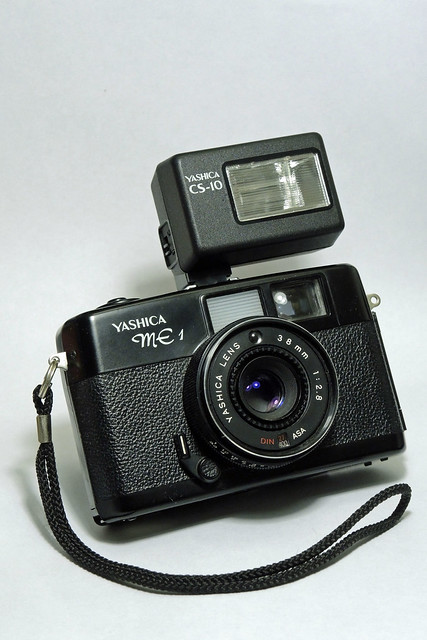
Yashica ME-1 by P F McFarland, on Flickr
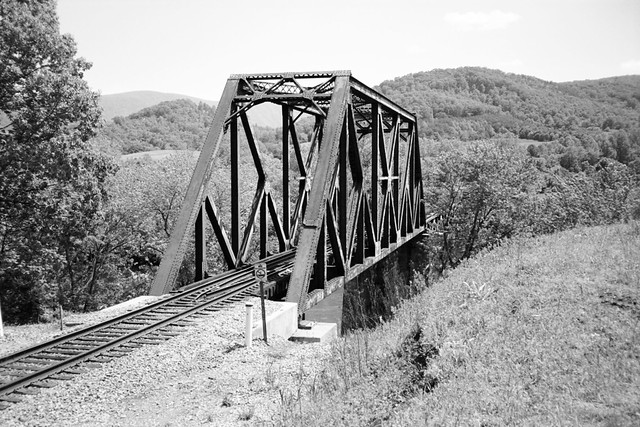
NS James River Bridge B&W by P F McFarland, on Flickr
A five image stitch

Big Collection by P F McFarland, on Flickr
A little fancier than the Mayberry Fords
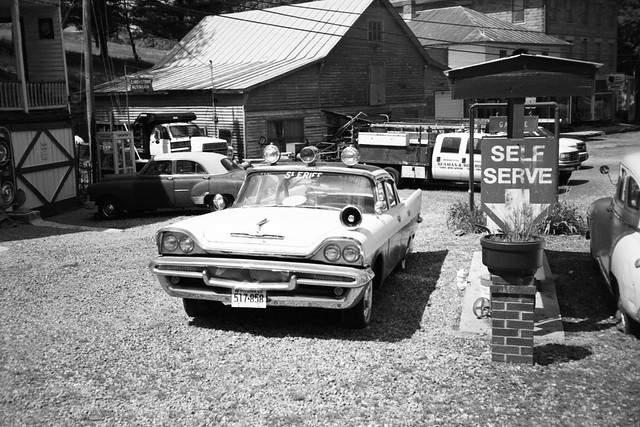
The Law by P F McFarland, on Flickr
Internal reflection glare at the top of the image
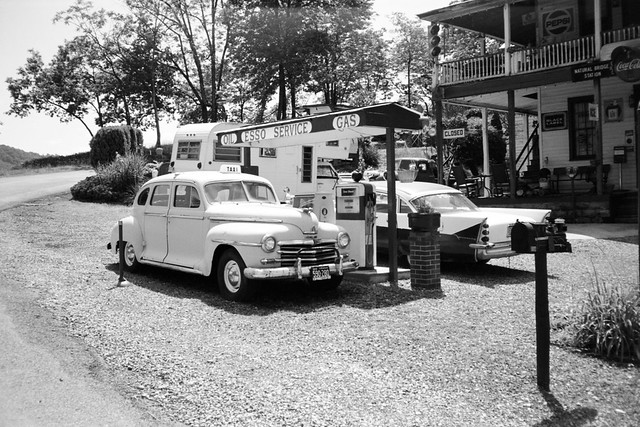
Need A Ride? by P F McFarland, on Flickr
Zone focusing
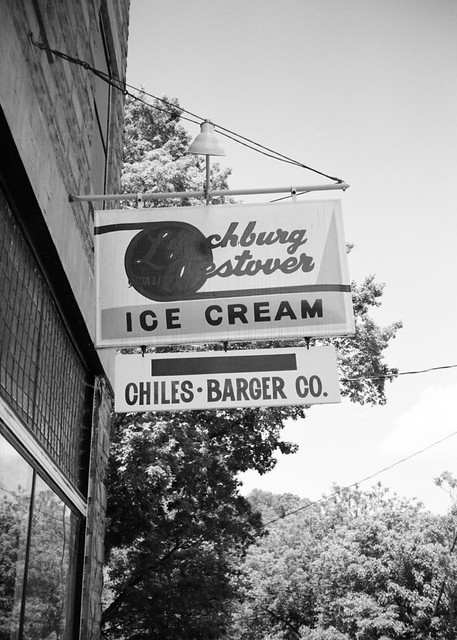
Tis But A Sign by P F McFarland, on Flickr
Image control is good
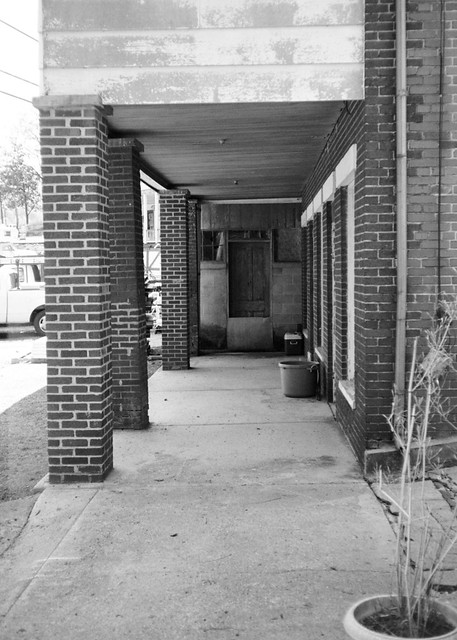
No Distortion by P F McFarland, on Flickr
I’m still looking for a redemption center
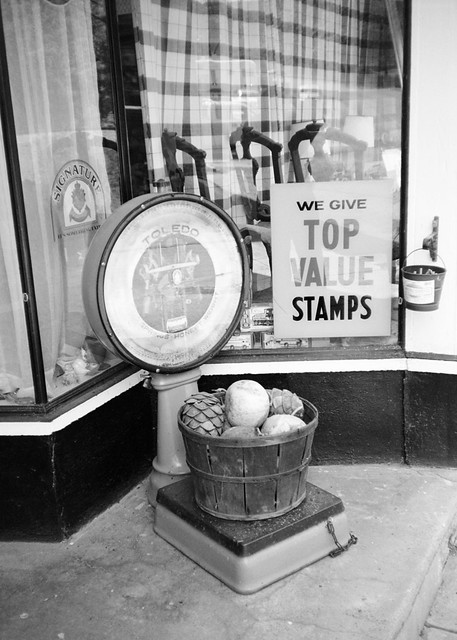
How Much Per Pound? by P F McFarland, on Flickr
A little work on this one

Some Corrections Needed by P F McFarland, on Flickr
To see the rest of the photos with narrative, go to https://flic.kr/s/aHskArfeXZ
PF
The body is all rounded corners, with the re-winder tucked in on the bottom, and the winder is a thumbwheel at the lower back.
The battery compartment for the PX625 1.35v cell is also on the bottom, but I substituted a zinc-air 1.4v cell. You need to keep a lens cap on the camera, or the battery will run down quickly, as the circuit is always on.
The lens is deep set enough so that in most situations, a hood is not needed. I couldn't find my 46mm vented hood, so I took a chance, and did not have a problem with flares.
That said, it appears there are reflections inside the lens box, so I'll put some gaffer's tape in there.
The camera performed quite well, with there being only a couple of frames (the ones underneath the old C&O bridge) where I opened up the shadows, and knocked down the highlights.
The lens is adequate for most scenes, though you can see some IQ degradation towards the edges when the aperture was more open. This area would normally fall within the cropping zones of most print makers if doing a 5x7 or 8x10, so normally you wouldn't see it.
The viewfinder has stationary bright frame lines, a meter readout, and a little cheater window to keep track of what focus zone you have it set on.
There is a self timer, the lens focuses to 3.3ft/1m, and there is a frame counter on top on the opposite end from the shutter button.
In the center of the top is the hot accessory shoe, the lens is set on Auto for non-flash photos, and on the aperture number after reading the distance scale (100 and 400 ISO) for flash photos.
It's light (a blend of metal, and polycarbonate), and without a hood on will fit in a shirt pocket. Mine came with a nice wrist strap, though there are two lugs for a neck strap.
It also came with a CS-10 flash unit (GN 10 @ 100 ISO) that takes one AA cell.. The charge capacitor is dead, but I had another flash purchased a long time ago to replace it with.
Both the camera and flash were manufactured in Brasil, and arrived in a clamshell display style box with the plastic pouches for camera and flash.

Yashica ME-1 by P F McFarland, on Flickr

NS James River Bridge B&W by P F McFarland, on Flickr
A five image stitch

Big Collection by P F McFarland, on Flickr
A little fancier than the Mayberry Fords

The Law by P F McFarland, on Flickr
Internal reflection glare at the top of the image

Need A Ride? by P F McFarland, on Flickr
Zone focusing

Tis But A Sign by P F McFarland, on Flickr
Image control is good

No Distortion by P F McFarland, on Flickr
I’m still looking for a redemption center

How Much Per Pound? by P F McFarland, on Flickr
A little work on this one

Some Corrections Needed by P F McFarland, on Flickr
To see the rest of the photos with narrative, go to https://flic.kr/s/aHskArfeXZ
PF